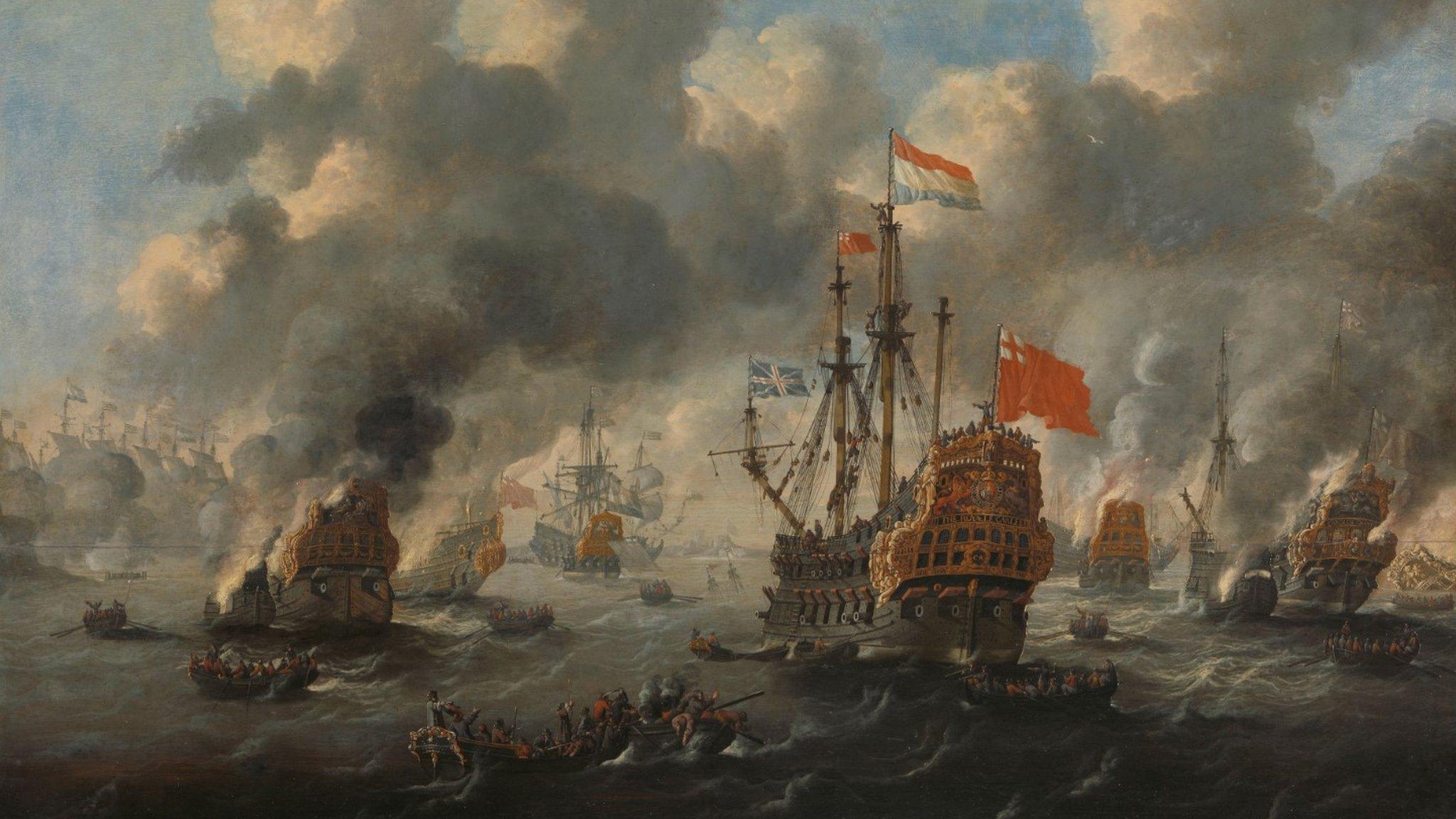Felixstowe re-enacts victory in Anglo-Dutch wars
- Published
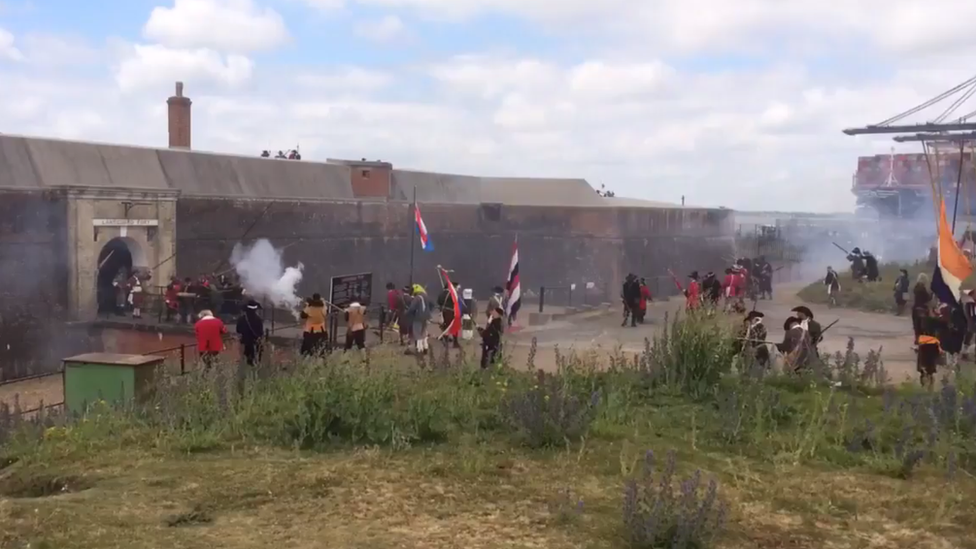
The first land battle of the Royal Marines was re-enacted at Landguard Fort in Suffolk
History re-enactors descended on a Suffolk fort to mark the 350th anniversary of the first land battle of what became the Royal Marines.
On 2 July 1667, a small garrison at Landguard Fort near Felixstowe repelled some 1,500 Dutch soldiers.
The victory, masterminded by Capt Nathaniel Darell, restored pride in the English navy after the Medway defeat, and could have changed history.
About 200 people recreated this "small but significant" success on Sunday.
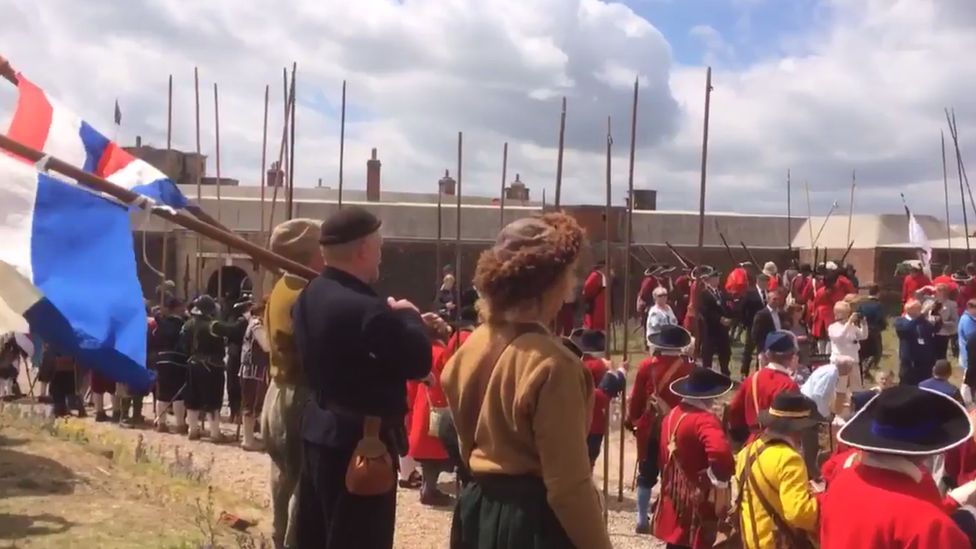
Landguard Fort was the site of the last opposed seaborne invasion of England, by the Dutch in 1667
In 1666, the Great Plague had continued to ravage the country, the Great Fire of London damaged the financial institutions and England and Holland had been embroiled in a war over trade. By 1667, King Charles II had little money and there were no funds for the Navy.
According to the tourist organisation Visit Felixstowe, external, in June 1667, the Dutch fleet raided the Medway, destroyed a number of ships and captured the Royal flagship. There was panic in London, with people concerned that the Dutch were going to destroy the country.
When the Dutch turned their attention to Harwich and its naval dockyard, only Landguard Fort stood between a Dutch force of some 2,000 men on Felixstowe beach - of which 1,500 raided the fort - and the dockyard.
Led by English turncoat Col Dolman, the Dutch advanced on the fort, but were stopped by Captain Darell and his garrison of 400 musketeers of the Duke of York & Albany's Maritime Regiment - forerunners of the Royal Marines.
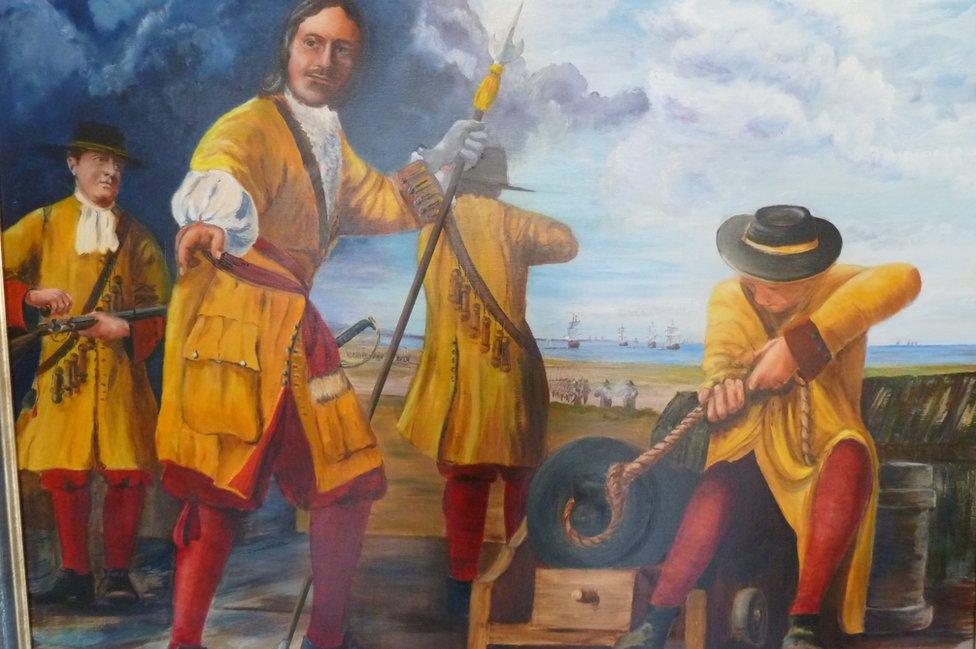
A Dutch force landed on Felixstowe beach but were stopped by Capt Darell and his 400 musketeers
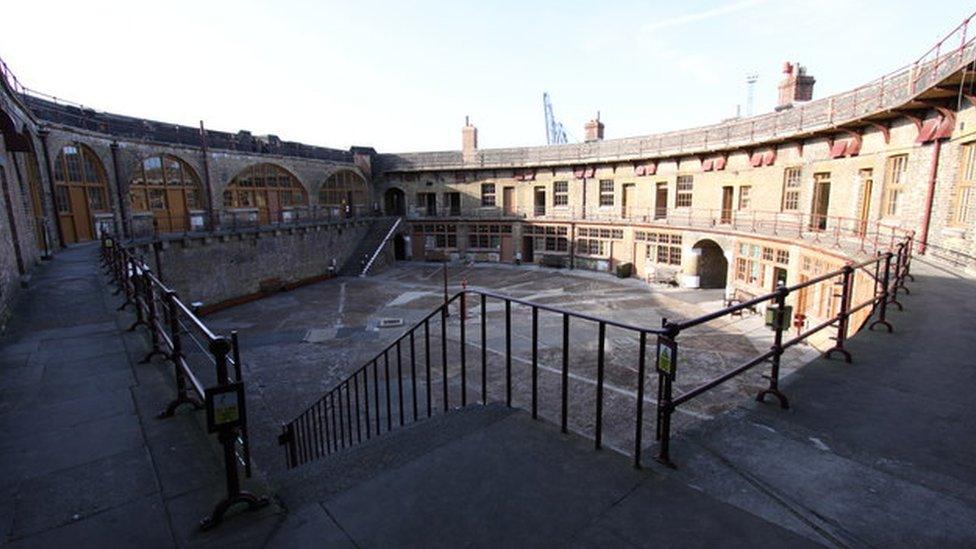
The current fort was built in the 18th Century, and modified in the 19th Century, with substantial additional 19th and 20th Century outside batteries
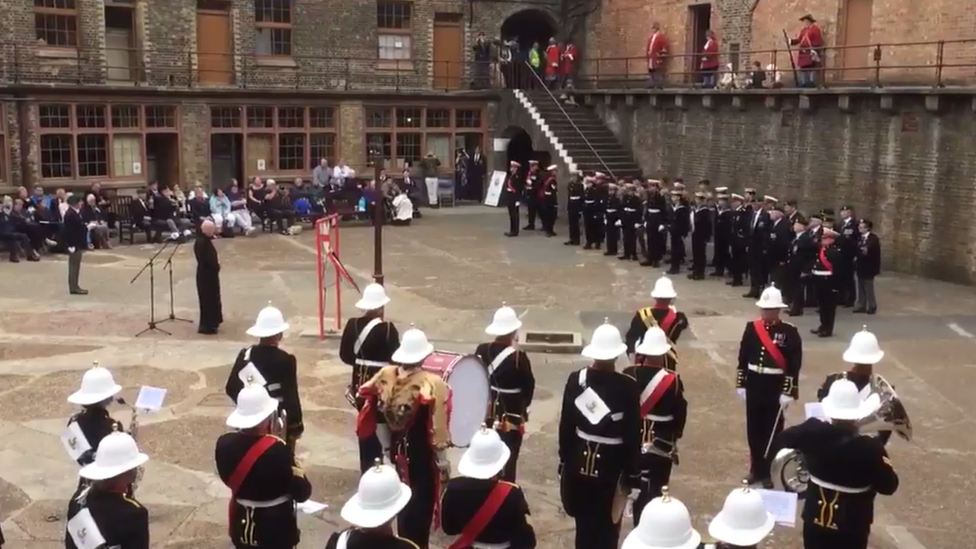
Sunday's events included a march on the fort as part of Suffolk Armed Forces Weekend
During the raid, Dolman was killed and the Dutch force retreated to its landing site before eventually sailing away.
English losses were light. Darell was wounded and was held up as a national hero.
'Restored pride'
Landguard project officer, Paul Grant, said: "It was a small but significant victory which potentially could have changed the course of history.
"The country had been humiliated... so when the Dutch were repelled it restored pride.
"There was real panic in the country at the time, the king was vulnerable and defeat could have had repercussions - the king could have abdicated."
At the end of July a peace treaty was signed - victory had given the English the upper hand with which to negotiate.
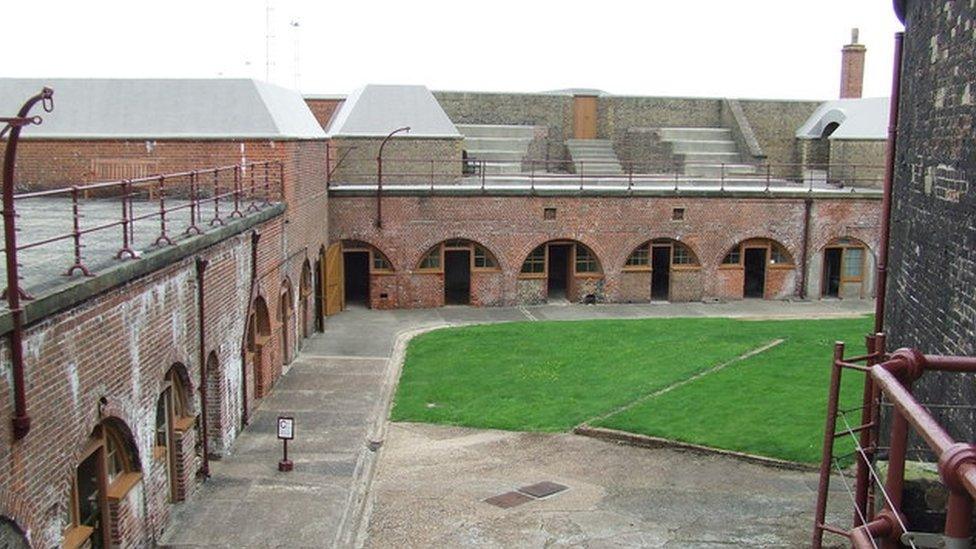
It was manned through both World Wars and played an important anti-aircraft role during the World War Two
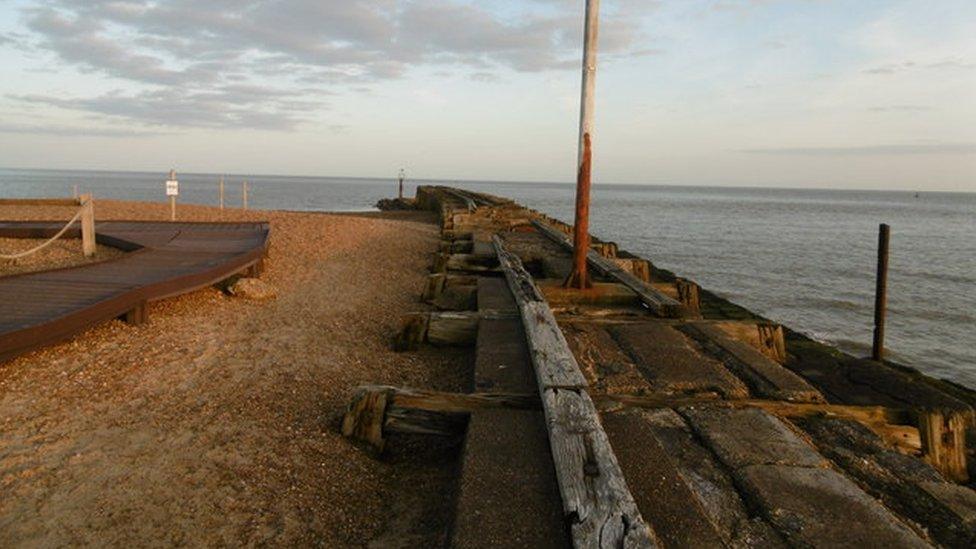
The Dutch sailed up and down the English coast

The fort was disarmed and closed in 1956
- Published7 June 2017
